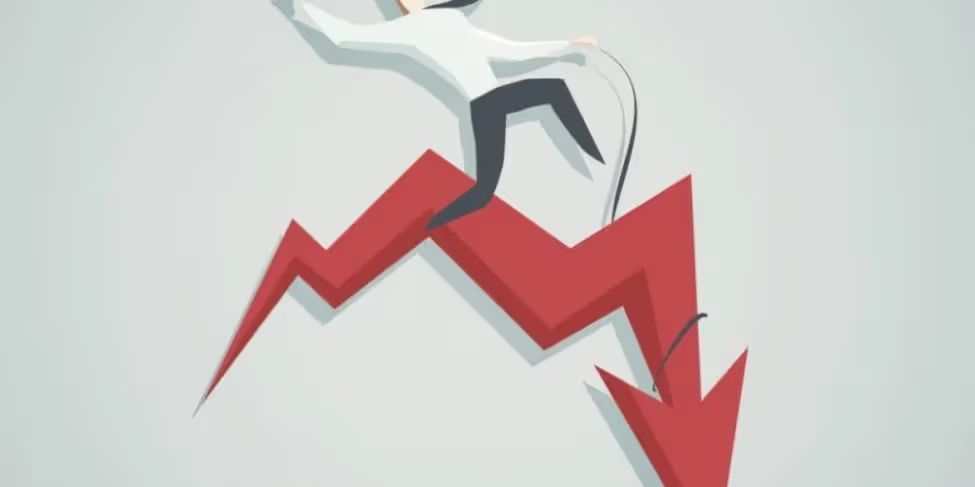What To Do With Your Brand In An Economic Downturn

Nobody really likes to talk about recession until one’s about to hit. It’s not just because economic hardship is an unpleasant thing to think about, but also because each recession tends to be a little different from the last, with its own characteristic difficulties to navigate. If you’re trying to keep your brand afloat it can be hard to know where to start, what to do, or whether to pack the whole thing in and move to a colony on the moon (I hear the wi-fi signal is great up there).
Above all, don’t panic. Take a slow, deep breath, and release. There are a number of time-proven tips that can help a brand weather an economic downturn, and we’ve got some ready for you to check out today. We’re here for you.
1) don’t stop advertising
As the saying goes, “When times are good you should advertise. When times are bad you must advertise.” Now, I know what you’re thinking. ‘Of course, a production studio is going to say I should keep advertising!’ Yes, yes we are. But for totally good reasons, I swear.
When a recession hits, stats show that ad spending goes down (https://www.forbes.com/sites/bradadgate/2019/09/05/when-a-recession-comes-dont-stop-advertising/#600f02474608). It makes sense on first thought: times are tough, scarce dollars need to be allocated carefully, and ad budgets are deceptively easy to see as an expendable cost. But continuing to advertise – or even increasing the ad effort – is crucial during this time to stay in consumers’ minds and project ongoing stability and dependability. Furthermore, because of the thinner advertising market, there are less competitors drowning out your voice on the playing field. And furthermore to that furthermore, the slower advertising market often tends to bring down prices for advertising, meaning it’s truly a buyer’s market for any brands who have the right mindset to capitalise on it.
2) bond with the consumer
In economically tough times it’s not just businesses who are hit hard. Job losses are at an all-time high, social tension lingers in the air, and as a result, many consumers cling more tightly to their dollars, feeling less inclined to spend on non-essential services.
That’s why a sincere emotional connection will weather a recession far better than any sale. Focus on your existing customers and prove you are there with them through this difficult time. Let them know about your brand’s lasting value. If you’re in the market of essential products, be the brand who differentiates themselves by their sense of character and community initiative which will last beyond the borders of this recession. If you’re pitching non-essential or luxury services, give permission to the customer to see your brand’s services as comfort or emotional release during the tough time. Don’t get too hung up on sales numbers for now – the idea is to form a longer-term bond with the consumer so they’ll seek you out even after the economic tide has turned.
Keep in mind it’s important to hit the right tone with your branding during these times. Wherever it fits, be a source of empathy and comfort. Promoting door-busting temporary sales in the thick of a recession can be problematic as it naturally carries a sense of stress and urgency, whereas promoting long-term community-building activities free of charge, such as online forums, seminars, and chat groups, can prove fruitful for customer loyalty down the road when financial pressures ease. Work out your existing customers’ recession behaviours and needs. Are they on the ‘live-for-today’ end of the scale or a more risk-averse ‘slam-on-the-brakes’ audience? Each style will have different cut-off points when it comes to buying essentials, treats, postponables, and expendables during sales downturns, and therefore different language styles they’ll be receptive to (https://hbr.org/2009/04/how-to-market-in-a-downturn-2).
3) ride the kaizen cycle
Unfortunately, things don’t stop breaking just because the economy is struggling. Problems must be fixed where they arise and brands must keep improving their practices. Kaizen (the Japanese term for ‘continuous improvement’) is a cyclic method of making business practice better over time (https://theleanway.net/what-is-continuous-improvement). The process involves several steps: identifying issues, encouraging and choosing a solution, testing and analysing the solution, and standardising the successful solution. The cycle is then repeated, adapting to newly arising issues and funnelling into continuously better solutions. On top of that, it’s a wise one to adopt in economically tight times as it provides a quick, reproducible way to spur innovation when resources are limited, and a cost-effective way to analyse where undue spending is going and how best to reallocate it.
4) increase your value rather than racing to the bottom
Increasing your value is an ideal which applies to business (and life) in all stages, and most especially so in times of scarcity and recession. But what exactly does it mean in brand and business to ‘increase your value’? In simple terms, it means identifying your smallest viable audience (i.e. a specific and identifiable community of followers) and channelling your innovations and product values toward them. This is particularly important work in times of recession as spending habits of the broader public shift and tighten, meaning ‘trying to please everyone’ becomes an exercise in endlessly lowering your value to compete.
While belts are tightening around the world, increasing your value can then seem like somewhat of a wild idea. Sometimes this will require advertising the quality, long-lasting value of your products, proving that yours is a brand worth investing in even if it costs a little more in the short term. Reinforce that cheapness does not equal value. In other cases, it will be most important to continue building community for, and around, your audience, so that whether in a bull or bear market your brand content becomes a source of consistent emotional value, standing for ideals of reliability and empathy.
5) recognise your collaborators now more than ever
Part of being a trustworthy brand that consumers can rely on during both good times and bad is fostering excellent relationships with your employees and collaborators. After all, unless you’re a sole operator it’s pretty likely you rely on the skills and efforts of a whole range of people to keep your business up and running. Now is the best time to continue (and increase) recognising those efforts at all levels of the brand, not just in the public sphere but also on a personal level, because the last thing you want is for employee praise to come off like a marketing stunt.
Genuinely recognising your collaborators is one of those amazing acts that benefits everyone on every level – the collaborator feels seen in their efforts, the brand then reaps a happy and engaged employee, and the customer base learns more about the true emotional values of the brand.
Start a






